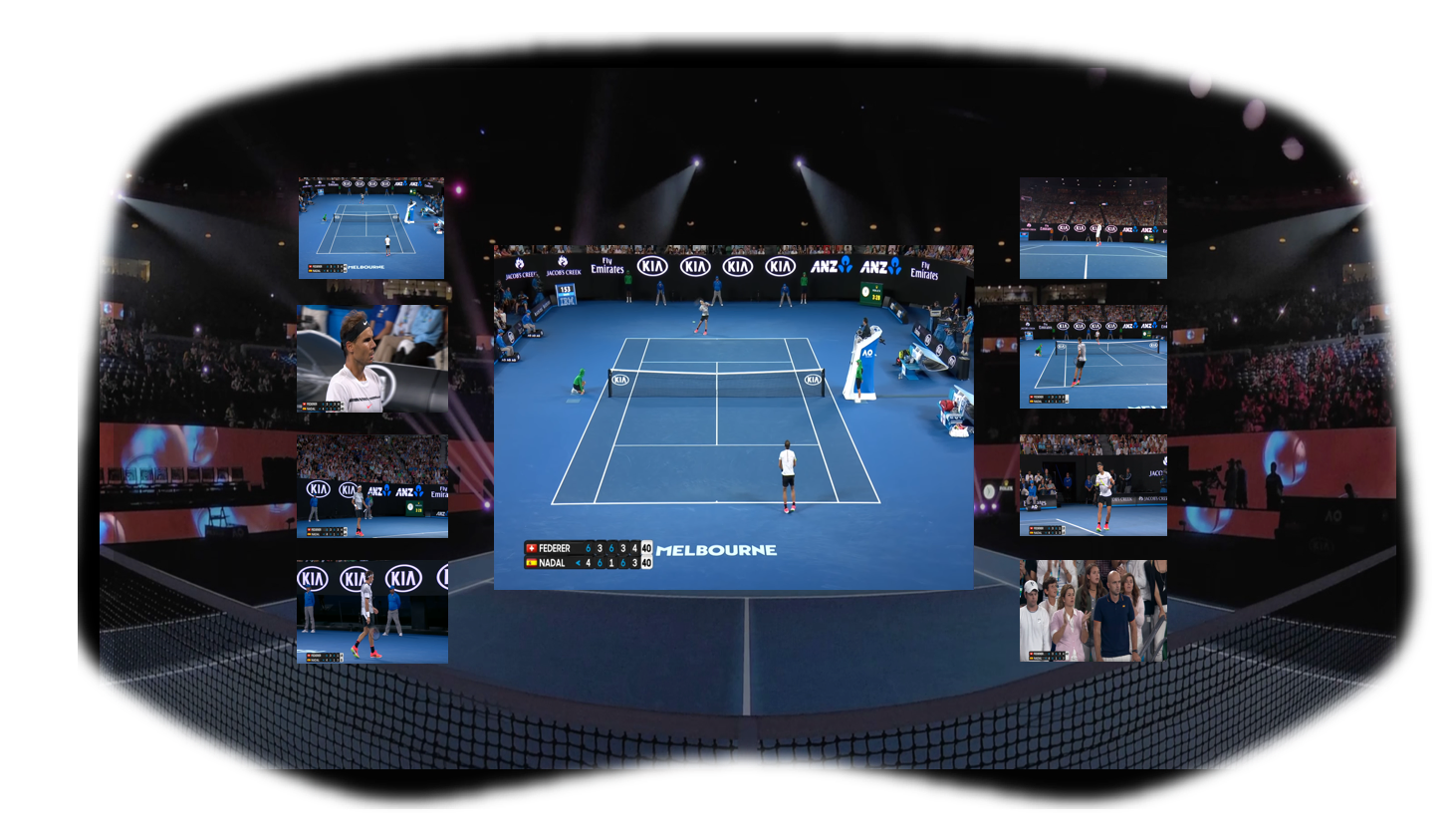VR Control Room: enhancing traditional broadcast with the immersion and interactivity of VR
Some Broadcasters are reluctant to test VR as a new format for their productions due to the effort it would suppose taking them to produce VR video content for every event they are covering. It is indeed a fair concern: current TV productions are already fairly complex: fixed cameras, moving cameras, drones, spider cams, analytics, dynamic graphics, multiple audios, subtitles, closed captions… in this a big and complex environment, adding the sophisticated VR production equipment for what (let’s face it) is still a “marginal” audience does not seem all that worth it to many. The benefit, at least in the short term, does not always compensate the enormous effort and cost in complexity, the entry barrier is simply too steep. In addition to this, regular broadcast has gone through many decades of refinement, and although 360 and 180 video do provide (when delivered properly) a unique novelty of immersion and sense of presence, immersive production practices and techniques are still in the early days, and are not in the same level of refinement and sophistication. This is why, to many broadcasters, doing immersive-only productions doesn’t seem appealing. And yet, the days in which a single produced TV feed was enough seem to be over: we have reached such level of refinement and sophistication in TV that we can barely enjoy it for more than a few seconds. Think of a racing event: with so many things happening at once, so many stats, rich visualizations, in-car cameras, interviews, reverse angles, overtake attempts, accidents, etc. , the produced TV feed can barely scratch the surface of the overall event. The way we experience these events needs to evolve beyond its current form while still enjoying the benefits it has already achieved. With these concerns in mind, YBVR has developed the VR Control Room: a solution to gather all these existing regular video feeds to build an amazing VR experience. This solution puts the user into the TV director’s chair, showing the feeds available to choose. Users can select what feed they prefer at any time, without any interruption in the watching and keeping all the feeds at the sight, all synchronized. Additionally, there is a lot of space around the viewer to include additional elements: match analytics, players bio, competition results, sponsors advertising… using the huge visual real state VR brings to keep users engaged with relevant and interactive content. YBVR’s VR Control Room lowers the barrier of entry to produce compelling immersive experiences: TV producers can offer a compelling VR experience taking advantage of all existing TV content without having to add the complexity of 180 or 360 productions from the beginning. Evolving this experience to increase its immersive appeal is a natural step with built-in support in YBVR platform, since immersive video feeds (up to 8K60FPS 360 video) can easily be added to the experience at any point. This means that broadcasters can include VR video content gradually, as users demand and production resources evolve. VR Control Room is available for Live and also for VoD productions, where users can watch a production again and again, choosing different views every time. YBVR has already applied this technology in the real world. You can find all these concepts applied in the Laver Cup VR App, available for OculusGo (here) and HTC Vive Focus (here), selecting Director’s chair in the Highlights and “Match points” videos. Feel free to share, in the comments of this post, what has been your experience. Don’t miss it!




